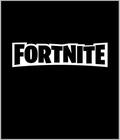In Fortnite, players and their friends lead a group of Heroes to reclaim and rebuild a homeland that has been left empty by a mysterious darkness only known as “the Storm.”
Players will band together online to explore the world for resources, build extravagant forts, find or build insane weapons and traps as they protect their towns from the strange monsters that emerge during the Storm.
Fortnite Battle Royale is the FREE 100-player PvP mode in Fortnite. One giant map. A battle bus.
The last one standing wins.
On September 17 the game will add support for ray traced reflections, shadows, global illumination, and ambient occlusion significantly raising the image quality in the game. At the same time, NVIDIA DLSS is coming to Fortnite to boost frame rates and generate beautiful, sharp images in the game. Additionally, NVIDIA Reflex technology for reduced latency will also be supported.
NVIDIA and Epic Games are working together to bring DXR ray tracing, NVIDIA DLSS, and NVIDIA Reflex support to the blockbuster smash Fortnite for ‘Save the World’, 'Creative’ and ‘Battle Royale’ modes.
Ray Tracing Comes to Fortnite
Fortnite will add four ray-traced features, for a more immersive gaming experience. These include:
- Ray-traced reflections – Recreates the way light reflects on glossy and metal surfaces, including smooth natural mirrors like window glass and rougher surfaces like brushed metal.
- Ray-traced shadows – Accurately models shadowing on many surfaces while enhancing surface and contact detail, and fixes problems associated with traditional shadow techniques.
- Ray-traced global illumination – Calculates world lighting with massively increased precision, illuminating Fortnite’s environments, players and characters with unprecedented detail, fidelity and clarity.
- Ray-traced ambient occlusion – Where objects or surfaces meet, light is occluded, creating subtle shadows that can highlight the slightest of surface details.
All told, ray tracing will bring a new level of detail and realism to Fortnite’s Battle Royale, Creative and Save the World modes.
Using AI to Boost Performance and Image Quality in Fortnite
NVIDIA DLSS, which uses AI and is powered by RTX Tensor Cores, is a deep learning neural network that boosts frame rates and generates beautiful, sharp images for games. It provides gamers the performance headroom to maximize quality settings and increase output resolution.
NVIDIA Reflex Comes to Fortnite
Fortnite is one of the first games to support NVIDIA Reflex, which measures and reduces system latency. Reflex allows gamers to improve responsiveness, increase aiming precision and tune their system for battle.
System latency is the time it takes for a player’s actions to appear as pixels on the monitor and quantifies how the game feels. In games like Fortnite, NVIDIA Reflex low-latency mode dynamically reduces system latency by up to 42 percent in GPU-bound scenarios.
New Fortnite RTX Treasure Run Map Spotlights Ray Tracing
NVIDIA and Epic collaborated with top Fortnite creators on the new RTX Treasure Run map, which highlights the new technologies Fortnite is adding. The map drops players at the entrance to a museum where they are challenged to a scavenger hunt that highlights different ray-traced effects.
Along the way, players can explore a hall of mirrors, medieval castle and jungle, climb a giant statue and explore a shrunken science lab to uncover the most treasures in the least amount of time. RTX Treasure Run is coming soon.
The new features are coming soon to Fortnite Chapter 2 - Season 4 for PC players and make Fortnite a flagship title for next-generation gaming technologies.
Fortnite is currently available for Nintendo Switch, PS4, Xbox One, PC, Android and iOS, while also coming to PS5 and Xbox Series X in the near future.
More articles about Fortnite











 Fortnite is an expansive original world that invites players to be creative, resourceful and collaborative, combining building skills and destructible environments with intense PvP combat.
Fortnite is an expansive original world that invites players to be creative, resourceful and collaborative, combining building skills and destructible environments with intense PvP combat.